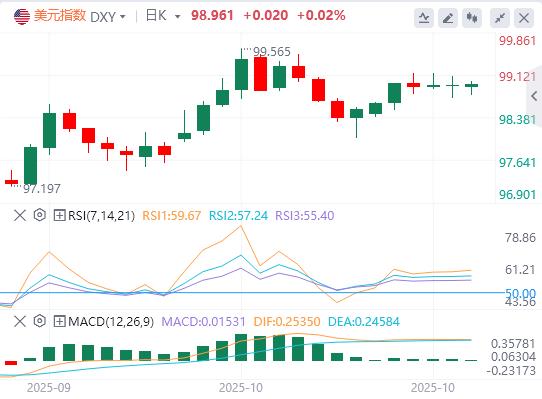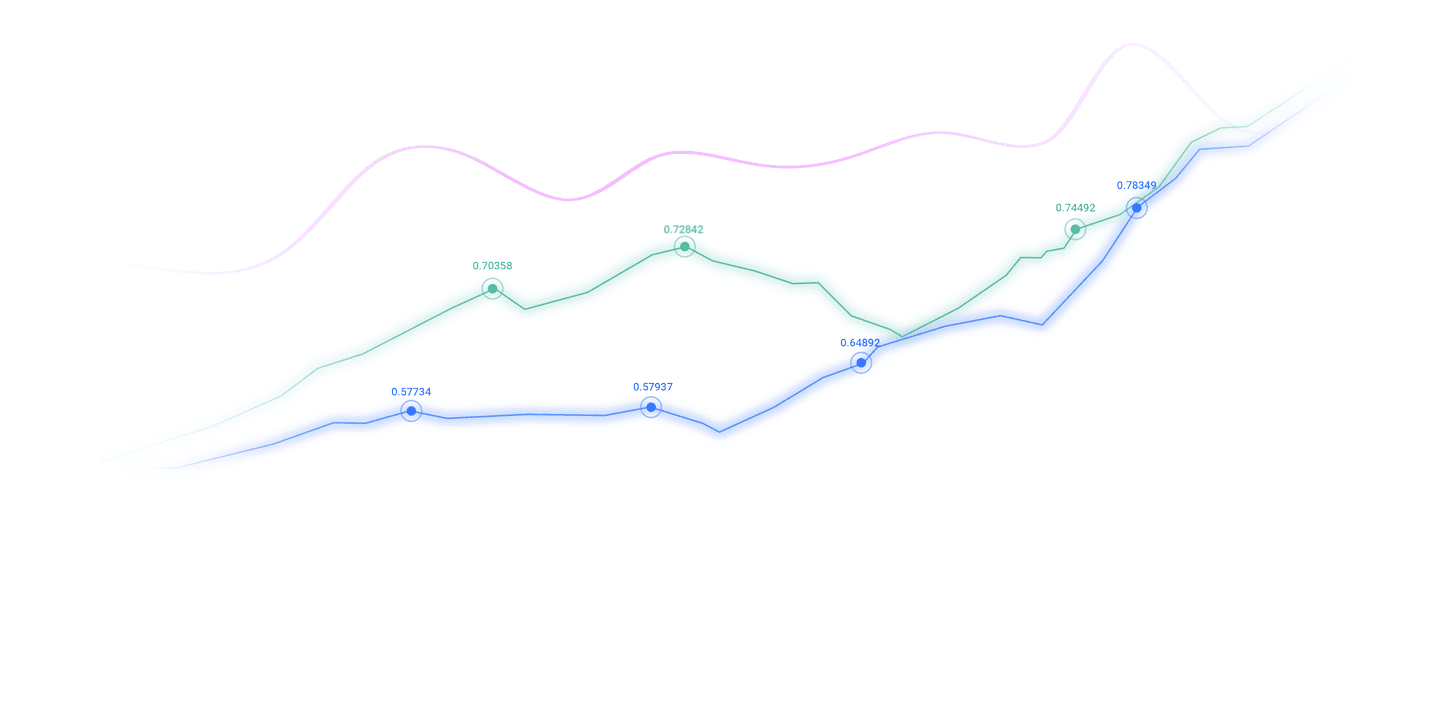Trusted by over 15 Million Traders
The Most Awarded Broker
for a Reason
CATEGORIES
News
- Chinese live lecture today's preview
- The dollar hovers around 98.5, and the drama "fired Powell" is updated again
- Palm oil has been approaching key resistance with three consecutive positive mom
- The US dollar and Canadian dollar are in a tug-of-war battle, with 1.39% of the
- Bank of England cuts interest rates to suppress pound, GBP/USD falls to 1.3195
market news
In September, CPI strengthened expectations of interest rate cuts, but the US dollar relied on risk aversion to support the shock!
Wonderful introduction:
There are always more missed things in life than not missed ones. Everyone has missed countless times. So we don’t have to feel guilty and sad about what we miss, we should be happy about what we have. If you miss beauty, you have health; if you miss health, you have wisdom; if you miss wisdom, you have kindness; if you miss kindness, you have wealth; if you miss wealth, you have www.xmhouses.comfort; if you miss www.xmhouses.comfort, you have freedom; if you miss freedom, you have personality...
Hello everyone, today XM Foreign Exchange will bring you "[XM Foreign Exchange Platform]: September CPI strengthens interest rate cut expectations, but the US dollar relies on risk aversion to support the shock!" Hope this helps you! The original content is as follows:
Asian Market Trends
Last Friday, lower-than-expected CPI data boosted market interest rate cut expectations. The U.S. dollar index fell in the short term and then rebounded slightly. As of now, the U.S. dollar is quoted at 98.96.

U.S. CPI - ① U.S. CPI in September was lower than expected across the board, and traders are betting that the Federal Reserve will cut interest rates twice more this year. ② Hassett, director of the White House National Economic Council: The data is "excellent", inflation is slowing, and the pressure on the Federal Reserve has eased. ③The U.S. White House: It may not be possible to release inflation data next month for the first time in history.
The United States dispatches the USS Ford aircraft carrier strike group to the Caribbean.
Trump: The stock market is stronger than ever because of tariffs.
According to Nikkei: During US President Trump’s visit to Japan, Japan and the United States will sign a memorandum of understanding on technical cooperation.
Takaichi Sanae held its first telephone conversation with Trump.
U.S. Senator: After his trip to Asia, Trump will hold a briefing in Congress on the possible expansion of attacks on Venezuela.
Trade Agreement - ① The United States and Thailand signed an agreement on key minerals and will maintain a 19% tariff on Thailand; ② Trump and the President of Brazil will meet, and the two sides willDuring the economic and trade negotiations, Pakistan requested the suspension of tariffs during the negotiation process; ③ The United States and Malaysia signed a trade agreement and a critical minerals agreement; ④ The United States and Vietnam announced a framework for a reciprocal, fair, and balanced trade agreement, and will maintain a 20% tariff on Vietnam. ⑤ Dissatisfied with Canada’s anti-tariff advertisement, Trump announced an additional 10% tariff on Canada. The United States announced the termination of all trade negotiations with Canada; Canadian Prime Minister Carney said he is ready to restart trade negotiations when the United States is ready.
Bank of America cited EPFR data: Gold funds recorded the largest weekly inflow in history in the week ending last Wednesday; annual inflows of gold and bonds may hit record highs.
European rating agency Scope downgraded the U.S. sovereign credit rating to AA-.
Moody's lowered the outlook on France's sovereign credit rating to negative.
Multiple Palestinian factions agreed to establish an independent technocratic agency to govern the Gaza Strip.
Pakistan and Afghanistan held the second round of ceasefire talks in Türkiye.
Cambodia and Thailand signed a joint peace declaration in Malaysia.
Summary of institutional views
ING looks forward to the Federal Reserve meeting: Economic data is more important than the meeting itself, and the dollar’s rise may not last long
The risk of upward inflation is receding, while concerns about the job market are increasing. The Federal Reserve is expected to cut interest rates by another 25 basis points this week and may end its quantitative easing policy. However, we believe that the US dollar is currently more sensitive to economic data than the Fed meeting itself. A data vacuum during the government shutdown briefly supported dollar strength - a lack of data meant it was difficult to speculate on the likelihood of further easing. However, the foreign exchange market subsequently fell into a disorientation, and the final non-agricultural data released is likely to have more influence on the trend of the US dollar than the October meeting.
Looking back on the situation in September, the Fed's interest rate cut, which was fully www.xmhouses.communicated in advance, triggered a strong rebound in the US dollar. However, the current market position distribution is more balanced, and the probability of repeating this kind of market is low. However, considering that Powell may once again show caution when assessing the inflation and employment situation, the dollar still faces an upward balance of risks on the day of the Fed meeting. However, unless the Fed sends a clear hawkish signal, the dollar rally triggered by the meeting day is not expected to last. Once regular economic data releases resume, the flow of information is likely to re-point to a weaker dollar, especially in the seasonally weak year-end phase.
ING looks forward to the Federal Reserve meeting: Will the end of QT have a significant impact on the short-term bond market?
This Fed meeting will focus on liquidity management. The current scale of bank reserves is slightly less than 3 trillion US dollars (about 10% of GDP). Although it is in the www.xmhouses.comfort zone, the Fed wants to ensure sufficient buffers. Historical experience shows that when the reserve ratio drops below 7% (the repurchase market was turbulent in 2019), moderate corporate tax payments can trigger violent fluctuations in the capital market. In order to ensure that the reserve ratio does not fall below 9%, the Fed can also tolerate a contraction of about US$300 billion.Reduce space.
Treasury debt is currently shrinking by approximately US$5 billion per month, and MBS has actually shrunk by approximately US$15 billion (below the US$35 billion upper limit), for a total monthly shrinkage of US$20 billion. At this rate, buffer space will be exhausted within a year. In this regard, the Fed may take the following paths: ① www.xmhouses.completely stop the reduction of Treasury bonds; ② Either tolerate the retention of its balance sheet for the $2 trillion MBS position, or increase its holdings of Treasury bonds or treasury bills while maintaining the reduction of MBS (the latter can avoid being interpreted as quantitative easing). However, the impact of this meeting on the government bond market is expected to be limited. As long as inflation data is under control, the yield curve may remain stable. Given the Fed's focus on economic vulnerabilities and its "End QT" plan, the Treasury market is expected to remain stable.
Bank of America: The Bank of Japan is paving the way for the next interest rate hike
We expect the Bank of Japan to keep the policy rate unchanged at 0.5% at its next monetary policy meeting on October 29-30. Market expectations for a rate hike in October had increased after two policy www.xmhouses.committee members unexpectedly proposed a rate hike at the September 18-19 meeting. However, as the Liberal Democratic Party leadership election on October 4 disrupted the domestic political landscape, expectations for an interest rate hike in October have fallen sharply. Although the prime minister election has concluded smoothly, given the continued domestic political uncertainty and the difficulty in assessing the U.S. economic situation during the government shutdown, we expect the Bank of Japan to remain on hold at its October meeting.
Even if the Bank of Japan keeps interest rates unchanged as expected, we believe it will send a hawkish signal to prepare for the next interest rate hike. The Bank of Japan is expected to slightly raise its GDP growth forecast for fiscal year 2025 based on data from the past three months, but the forecast for fiscal year 2026-2027 will remain basically unchanged. A more important focus is on the wording of economic and inflation expectations and risk assessments in the meeting statement - any wording revision that hints at a slowdown in the pace of growth or underlying inflation, or that "remains a high degree of uncertainty" in domestic and foreign economic activity and prices, may be regarded as an important signal towards the next interest rate hike. If policy members other than Takada Hajime (who advocated an interest rate hike at the September meeting) also expressed support for an interest rate increase, it would also send a clear message that the central bank is close to raising interest rates. Even if the above adjustments do not occur, we expect that Governor Kazuo Ueda will respond to the recent rise in inflation expectations by placing more emphasis on underlying inflation and upward price risks at the post-meeting press conference. The market is likely to interpret this as the central bank paving the way for the next rate hike.
Mitsubishi UFJ: The U.S. and Japan may struggle to stabilize at 155, and inflation has not put pressure on the Bank of Japan to raise interest rates
The U.S. and Japan are currently trading around 153, reflecting the overall strength of the U.S. dollar and the general market expectation that the Bank of Japan will not raise interest rates at the next meeting. Japan's CPI data released in the morning showed an increase in energy inflation. This is because the large-scale energy subsidies in the same period last year have withdrawn from the statistical base. At the same time, service industry inflation also fell slightly. Overall, this set of data will not put additional pressure on the Bank of Japan to raise interest rates. Takaichi Sanae gave a policy speech this morning. AlthoughWhile the Japanese bond market remained stable, her emphasis on "responsible and proactive fiscal policy" further strengthened the yen's modest weakening trend.
The yen remains in a weak range, and the sharp rise in international crude oil prices has further exacerbated the negative sentiment about the yen in the short term. Japan's high dependence on imported energy prompted importers to increase dollar trading. In addition, if oil prices continue to rise, it will push up inflation expectations, thereby lowering Japan's real interest rates, further strengthening the "BoJ behind the curve" trading logic, that is, the steepening of the Japanese government bond yield curve parallels the depreciation of the yen. There may be strong political opposition to a weak yen ahead of Trump's visit to Japan. However, given that the Bank of Japan is widely expected to maintain its current policy next week, the impact of pure remarks is expected to be limited. All in all, we currently do not believe that the USJPY can continue to stand above the 155 level.
The above content is all about "[XM Foreign Exchange Platform]: CPI strengthened interest rate cut expectations in September, but the US dollar relied on risk aversion to support the shock!" It was carefully www.xmhouses.compiled and edited by the editor of XM Foreign Exchange. I hope it will be helpful to your trading! Thanks for the support!
Sharing is as simple as a gust of wind can bring refreshing, as pure as a flower can bring fragrance. Gradually my dusty heart opened up, and I understood that sharing is actually as simple as the technology.
Disclaimers: XM Group only provides execution services and access permissions for online trading platforms, and allows individuals to view and/or use the website or the content provided on the website, but has no intention of making any changes or extensions, nor will it change or extend its services and access permissions. All access and usage permissions will be subject to the following terms and conditions: (i) Terms and conditions; (ii) Risk warning; And (iii) a complete disclaimer. Please note that all information provided on the website is for general informational purposes only. In addition, the content of all XM online trading platforms does not constitute, and cannot be used for any unauthorized financial market trading invitations and/or invitations. Financial market transactions pose significant risks to your investment capital.
All materials published on online trading platforms are only intended for educational/informational purposes and do not include or should be considered for financial, investment tax, or trading related consulting and advice, or transaction price records, or any financial product or non invitation related trading offers or invitations.
All content provided by XM and third-party suppliers on this website, including opinions, news, research, analysis, prices, other information, and third-party website links, remains unchanged and is provided as general market commentary rather than investment advice. All materials published on online trading platforms are only for educational/informational purposes and do not include or should be considered as applicable to financial, investment tax, or trading related advice and recommendations, or transaction price records, or any financial product or non invitation related financial offers or invitations. Please ensure that you have read and fully understood the information on XM's non independent investment research tips and risk warnings. For more details, please click here


































































































